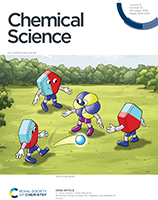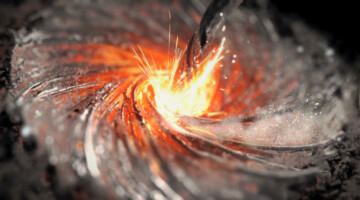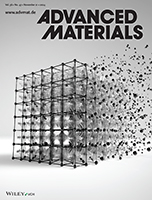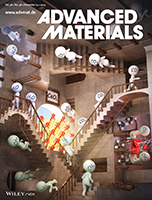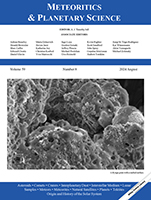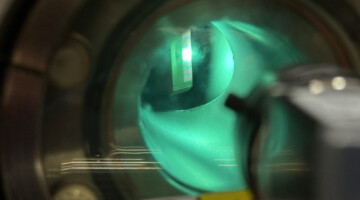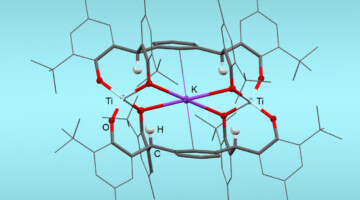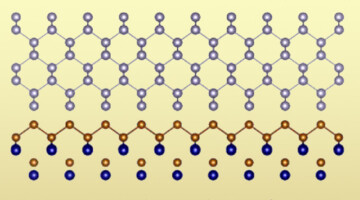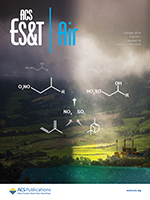-
-
-
-
-
- New national energy storage hub will enable transformative battery advancements
- Five ways LiSA is advancing solar fuels
- Documentary-style video highlights life at Berkeley Lab
- Scientists found dark electrons: a secret quantum state hidden in solid matter
- Daniela Leitner named Berkeley Lab’s next Engineering Division director and chief engineer
-
-
-
-
4f-Orbital Mixing Increases the Magnetic Susceptibility of Cp’3Eu
The ability to harness the 4f-orbital anisotropies and magnetic susceptibilities of lanthanide elements is key to their application in molecular magnetism, including as molecular qubits and single-molecule magnets. Here, 4f orbital mixing and its impact on the magnetic susceptibility of a trivalent Eu organometallic complex was analyzed experimentally. Read more »
Mechanism of an Economical Way to Produce Al–Ce Alloy
A time-resolved diffraction study conducted at the ALS revealed mechanistic insight into a multi-step chemical reaction for the economical production of aluminum–cerium alloy, a high-performance material with superior temperature stability. The results provide crucial information for the application of the method on an industrial scale. Read more »![]()
Tuning the Spin Transition and Carrier Type in Rare-Earth Cobaltates via Compositional Complexity
This work demonstrates that tunable disorder in a crystal can be quite useful: compositional site disorder was used to modify oxide semiconductors by changing the carrier type, improving crystallinity and tuning a spin transition. Applications include electrothermal thresholding devices such as radio frequency limiters. Read more »
Unveiling Direct Electrochemical Oxidation of Methane at the Ceria/Gas Interface
Ceria-based oxides embedded in solid-oxide fuel cells are recognized for their critical role in managing hydrocarbon activation and carbon coking. However, even for the simplest hydrocarbon molecule, CH4, the mechanism of electrochemical oxidation at the ceria/gas interface is not well understood. This study presents a Sm-doped ceria thin-film model cell that selectively monitors CH4 direct-electro-oxidation on the ceria surface. Read more »
Electron microscopy observations of the diversity of Ryugu organic matter and its relationship to minerals at the micro- to nano-scale
The work reported here addresses the question of how the organic matter (OM) in the Hayabusa2 samples compares and contrasts with OM from primitive carbonaceous chondrites, as observed primarily by transmission electron microscopy in concert with other microanalytical techniques. Read more »
Strategic ALS Projects Reach Key Milestones
Thanks to the hard work and dedication of multidisciplinary teams from groups across the ALS, a spate of important milestones occurred over the past month, for projects involving the new QERLIN beamline, the MERLIN beamline upgrade, and a new chamber for computer-chip metrology in Sector 12. Read more »
Converting N2 into Usable Form under Ambient Conditions
Researchers learned how molecular structure relates to function in catalysts that convert atmospheric nitrogen into more usable forms at room temperature and pressure. The work could lead to greater energy efficiency in producing nitrogen-based products such as fertilizer where large-scale industrial processes are unfeasible. Read more »![]()
![]()
Stabilizing Pristine α-Sn Thin Films for Topological Investigation
Researchers developed a recipe for the room-temperature stabilization of thin films of α-Sn, a form of elemental tin that exhibits a variety of topologically nontrivial phases, but only at low temperatures. By dramatically reducing contamination from the film’s substrate, the recipe greatly simplifies electronic structure studies. Read more »![]()
Chemical Insights into the Molecular Composition of Organic Aerosols in the Urban Region of Houston, Texas
This study illustrates the molecular composition of organic aerosols collected in the Houston, Texas, region using direct sampling interfaced with high-resolution mass spectrometry. This study highlights the episodic prevalence and day/nighttime distribution of organosulfates and organonitrates enriched species. Read more »
- « Previous Page
- 1
- …
- 3
- 4
- 5
- 6
- 7
- …
- 83
- Next Page »
